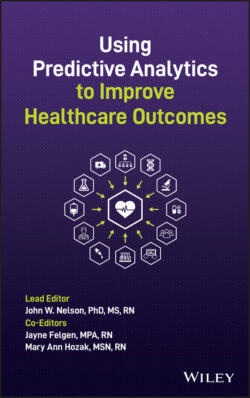Читать книгу Using Predictive Analytics to Improve Healthcare Outcomes - Группа авторов - Страница 38
Maturation of a Discipline
ОглавлениеNurses have revolutionized healthcare at least twice. Florence Nightingale's reformation of care delivery is the most well‐known example. Prior to Nightingale, care delivery was provided by monks and nuns of religious traditions (Goodnow, 1929). Nightingale's method of care delivery in 1854 espoused the need for a clean environment and individualized care of the patient (Nightingale, 1959). By insisting on a clean environment, she ensured that germs were not spread as rampantly from patient to patient. In effect, her adoption and enforcement of the paradigm “environments of care must be clean” improved patient safety. Germs and how disease spread were not clearly understood in the mid‐1800s, but scientific advancement is often discovered by accident (Kuhns, 1962). Nightingale's ability to document a decrease in mortality rate from 42.7% to 2.2% for soldiers in the Crimean war gained worldwide attention which resulted in her woman‐only model of nursing becoming the standard of care across the globe (McDonald, 2001; Neuhauser, 2003).
A second occurrence in which a nurse revolutionized healthcare is less well known. It was led by Agatha McGaw, a surgical nurse. It was McGaw who in the 1890s observed that patients often underwent surgery with great trauma and risk due to the methods used for anesthesia. It was her belief that this trauma and the associated deaths were due to the administration of too much anesthesia and/or the rapidity with which anesthesia was being administered. In response, she developed a method of administering anesthesia to patients by dropping the anesthesia medication into a cloth that was placed over the patient's nose and mouth. The anesthesia was taken in by the patient as the patient inhaled. The rate of dropping fresh anesthesia onto the cloth covering the patient's nose and mouth was adjusted based on the patient's rate of breathing, with fewer drops applied when the patient's breathing slowed, and more drops applied when the breathing rate increased. Using this method of administering anesthesia, she recorded giving anesthesia to 14,000 patients, none of whom died. Her observation of the patient, and adjusting treatment to the patient's response, resulted in the establishment of the profession of anesthesiology and a new paradigm of how anesthesia was administered, based on the patient's observed physical response (Koch, 1999; Pougiales, 1970).
Could the effectiveness of caring, as a proven way to hasten healing, be the third medical revolution put forth by nursing? Watson (a nurse) asserts that when nurses enact caring behaviors toward themselves and/or others, healing is facilitated (2008a). This is yet another paradigm that has come to be espoused by nurses around the world. While there was a surge of caring theories in the 1970s and 1980s, a recent search revealed that Watson's theory is the most referenced caring theory in literature, and it is the theory researched most extensively in this book. It is the conclusion of the editors and authors of this book and all of its chapters that the observable presence of caring behaviors is an important predictor of a satisfying and safe healthcare experience—both for patients and for providers in all roles and disciplines. All studies in this book took place in institutions pursuing implementation of caring behaviors using frameworks of care that espoused the importance of caring for both self and others. While outcomes indicate dramatic improvement due to the contributions of Nightingale and McGaw, such outcomes proving that caring for self and others improves patient health and nurse satisfaction are newer and fewer. This book contains research that goes a long way to solidify the paradigm “caring contributes to healing” as an evidence‐based reality.
It is the intent of the many authors of this book to find the best theory or combination of theories to demonstrate not only that caring contributes to healing, but that the frameworks of care, through which caring behaviors are supported within systems of care, have inestimable value. We are at the point in this work where Benjamin Franklin was, just prior to his discovery of electricity. Prior to his famous encounter with the lightning bolt, there were several other theorists working on understanding electricity (Kuhn, 1962). It was not until Franklin considered the similarities of all the theories, and conducted a fascinating experiment with liquid electricity in a jar called a Layden jar, that Franklin's work resulted in what we now know as electricity as well as a profession for electricians to practice (Kuhn, 1962). Will one or more of the case studies in this book be the lightning bolt that shifts healthcare into a more complete and irrevocable understanding that caring contributes to healing?
Will one or more of the case studies in this book be the lightning bolt that shifts healthcare into a more complete and irrevocable understanding that caring contributes to healing?
